Abstract
Pasteurella multocida grown under conditions of iron deprivation secreted into the culture medium a growth-enhancing factor which functioned as a siderophore. The siderophore was found to be neither a phenolate nor a hydroxamate by chemical tests and bioassays and was given the trivial name multocidin. Multocidin was partially purified and found to be a highly polar, nonaromatic, and dialyzable compound. This is the first report demonstrating the production of a siderophore by P. multocida.
Full text
PDF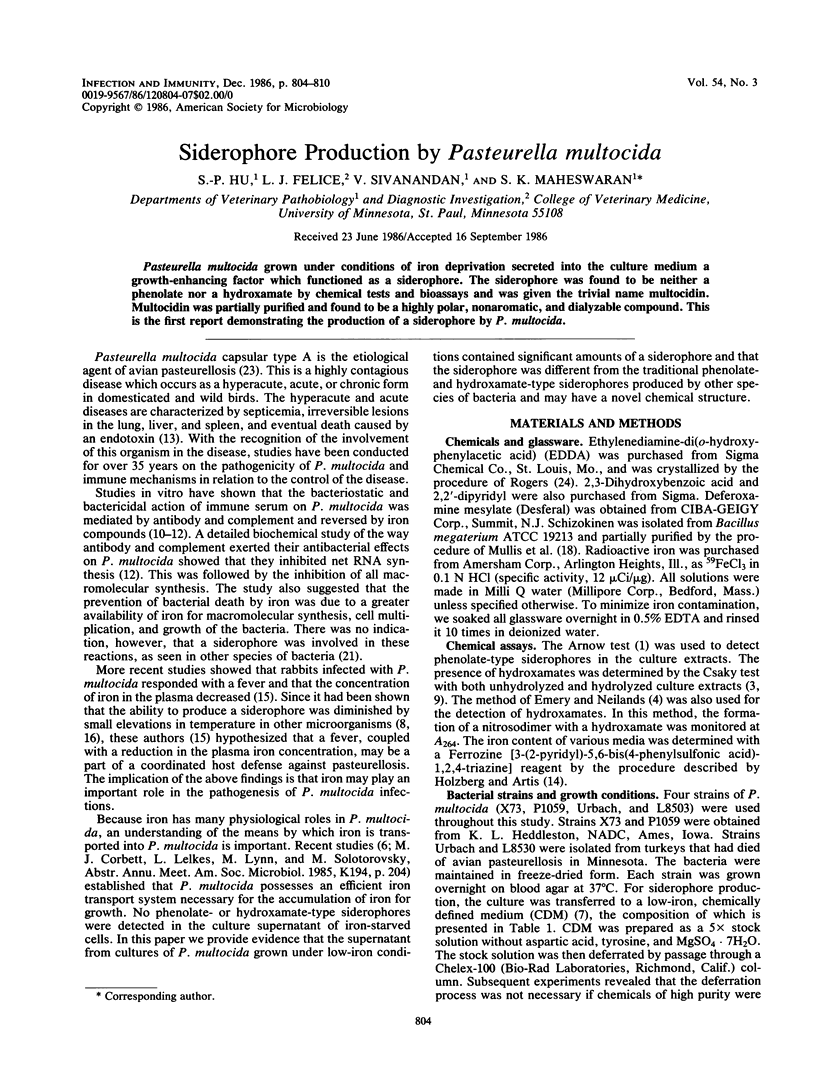
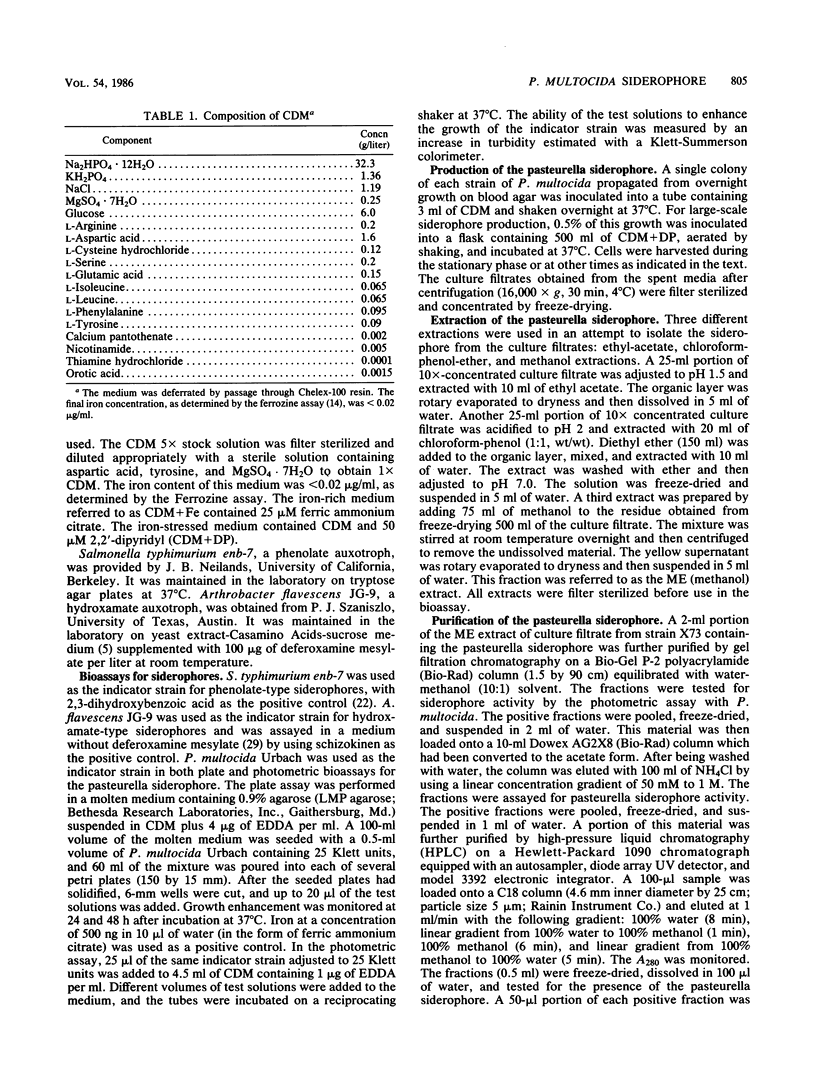
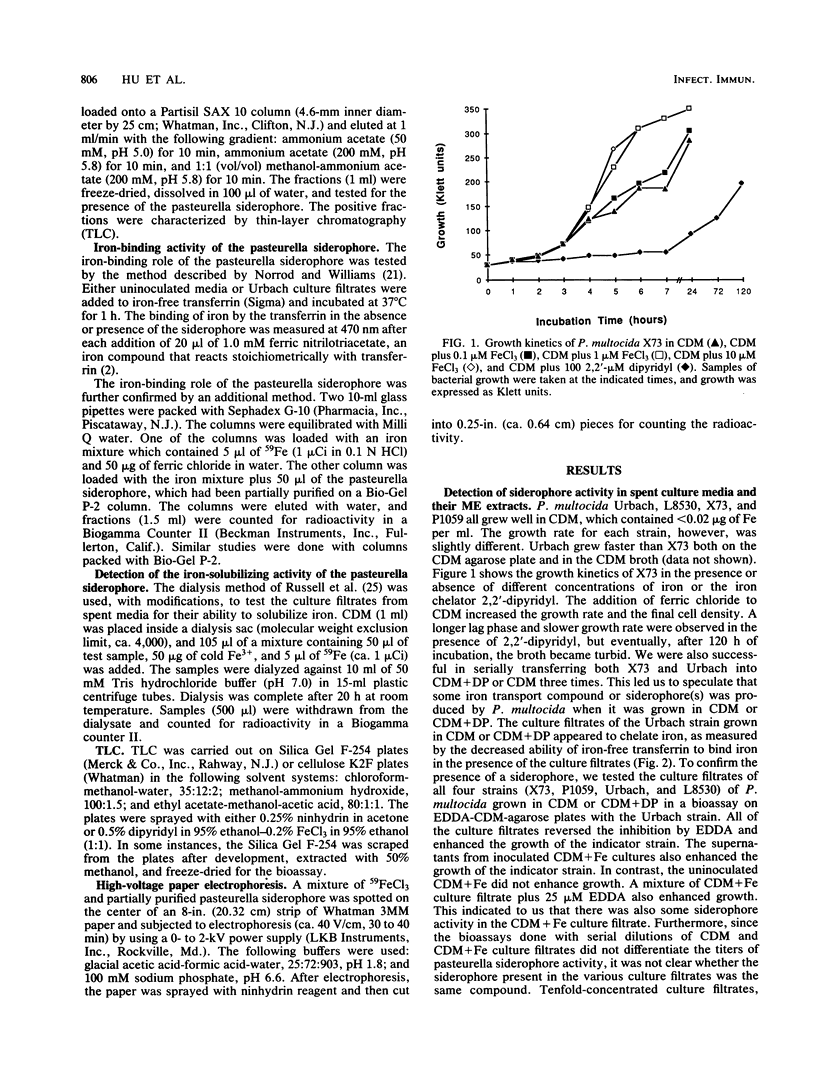

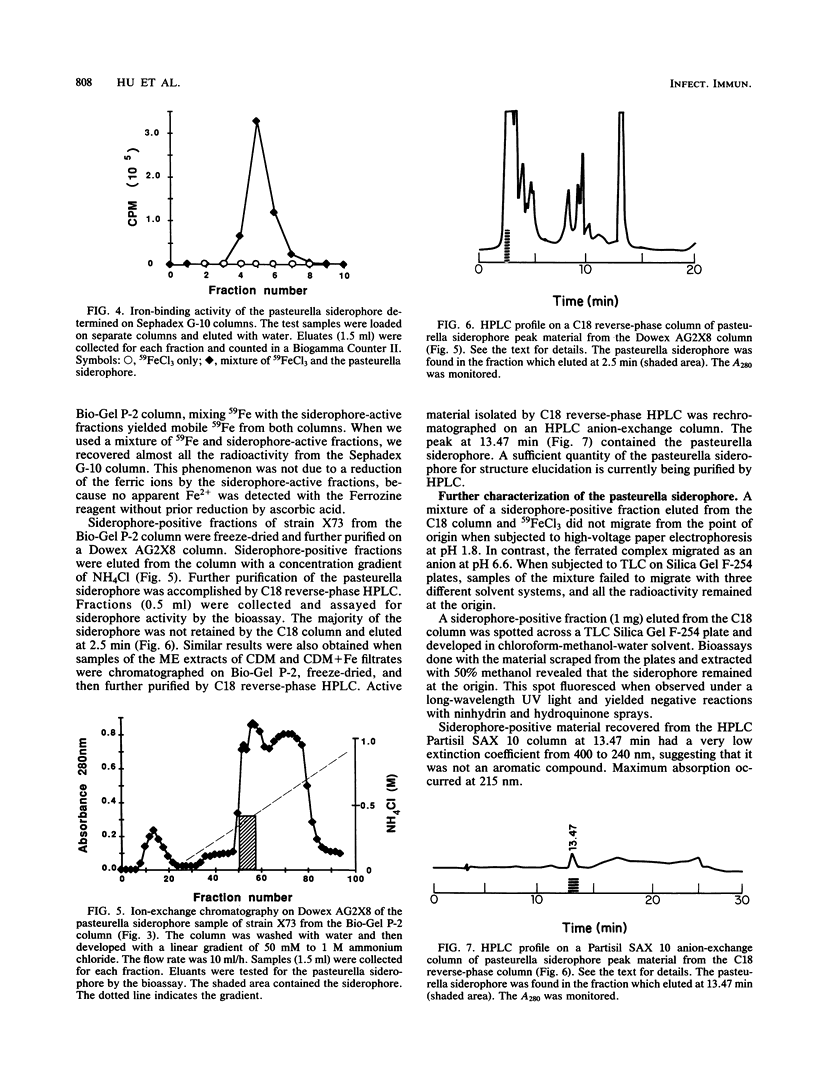
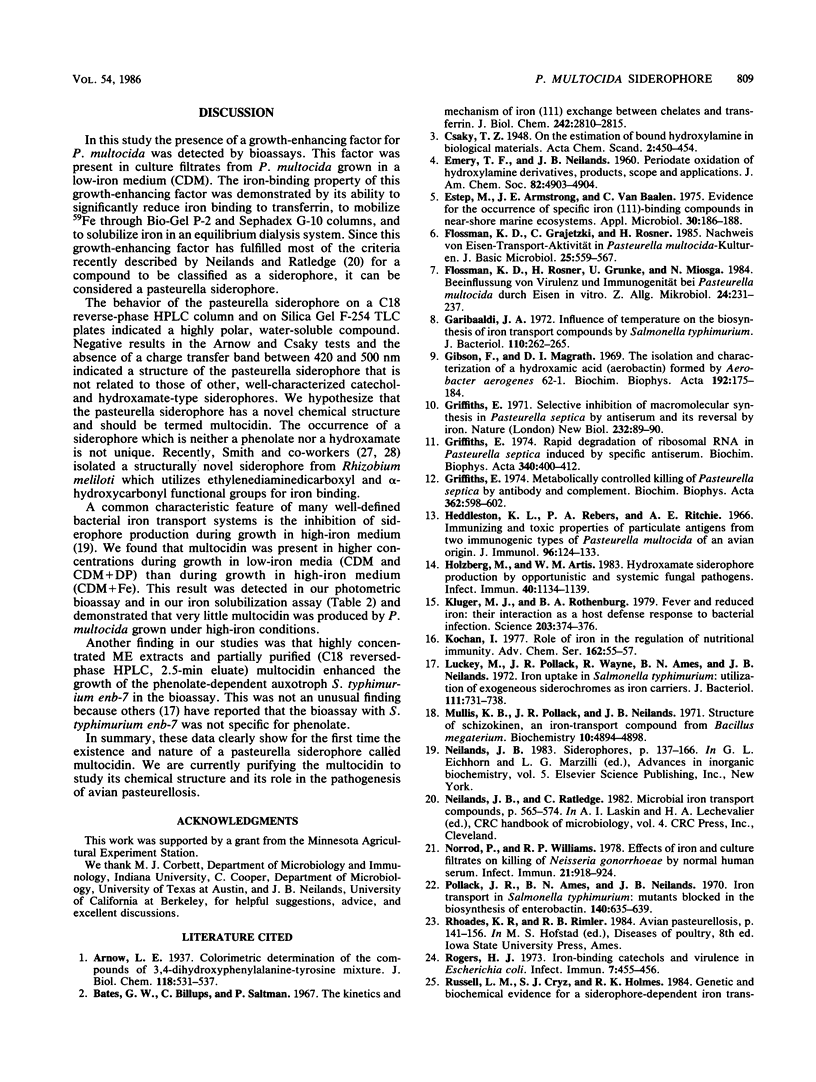
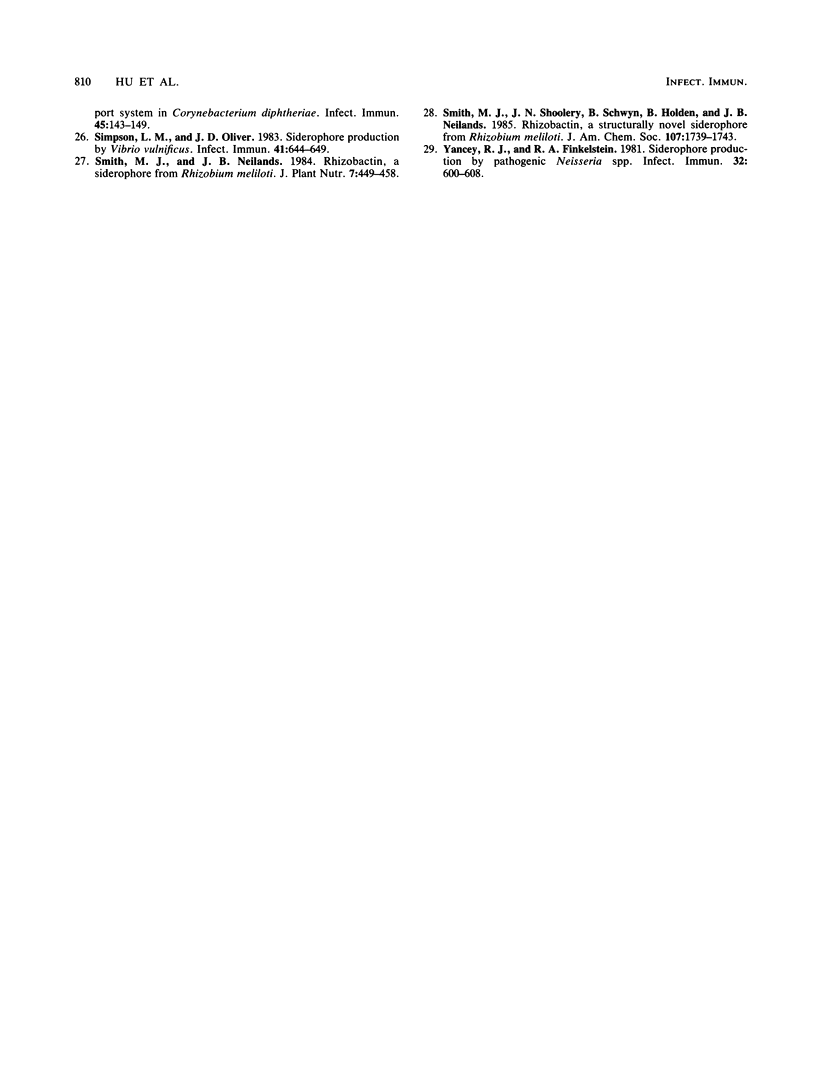
Selected References
These references are in PubMed. This may not be the complete list of references from this article.
- Bates G. W., Billups C., Saltman P. The kinetics and mechanism of iron (3) exchange between chelates and transferrin. I. The complexes of citrate and nitrilotriacetic acid. J Biol Chem. 1967 Jun 25;242(12):2810–2815. [PubMed] [Google Scholar]
- Estep M., Armstrong J. E., Van Baalen C. Evidence for the occurrence of specific iron (III)-binding compounds in near-shore marine ecosystems. Appl Microbiol. 1975 Aug;30(2):186–188. doi: 10.1128/am.30.2.186-188.1975. [DOI] [PMC free article] [PubMed] [Google Scholar]
- Flossmann K. D., Grajetzki C., Rosner H. Nachweis von Eisen-Transport-Aktivität in Pasteurella multocida-Kulturen. J Basic Microbiol. 1985;25(9):559–567. doi: 10.1002/jobm.3620250902. [DOI] [PubMed] [Google Scholar]
- Flossmann K. D., Rosner H., Grünke U., Miosga N. Beeinflussung von Virulenz und Immunogenität bei Pasteurella multocida durch Eisen in vitro. Z Allg Mikrobiol. 1984;24(4):231–237. doi: 10.1002/jobm.3630240404. [DOI] [PubMed] [Google Scholar]
- Garibaldi J. A. Influence of temperature on the biosynthesis of iron transport compounds by Salmonella typhimurium. J Bacteriol. 1972 Apr;110(1):262–265. doi: 10.1128/jb.110.1.262-265.1972. [DOI] [PMC free article] [PubMed] [Google Scholar]
- Gibson F., Magrath D. I. The isolation and characterization of a hydroxamic acid (aerobactin) formed by Aerobacter aerogenes 62-I. Biochim Biophys Acta. 1969 Nov 18;192(2):175–184. doi: 10.1016/0304-4165(69)90353-5. [DOI] [PubMed] [Google Scholar]
- Griffiths E. Metabolically controlled killing of Pasteurella septica by antibody and complement. Biochim Biophys Acta. 1974 Oct 8;362(3):598–601. doi: 10.1016/0304-4165(74)90157-3. [DOI] [PubMed] [Google Scholar]
- Griffiths E. Rapid degradation of ribosomal RNA in Pasteurella septica induced by specific antiserum. Biochim Biophys Acta. 1974 Apr 10;340(4):400–412. doi: 10.1016/0005-2787(74)90061-6. [DOI] [PubMed] [Google Scholar]
- Griffiths E. Selective inhibition of macromolecular synthesis in Pasteurella septica by antiserum and its reversal by iron. Nat New Biol. 1971 Jul 21;232(29):89–90. doi: 10.1038/newbio232089a0. [DOI] [PubMed] [Google Scholar]
- Holzberg M., Artis W. M. Hydroxamate siderophore production by opportunistic and systemic fungal pathogens. Infect Immun. 1983 Jun;40(3):1134–1139. doi: 10.1128/iai.40.3.1134-1139.1983. [DOI] [PMC free article] [PubMed] [Google Scholar]
- Kluger M. J., Rothenburg B. A. Fever and reduced iron: their interaction as a host defense response to bacterial infection. Science. 1979 Jan 26;203(4378):374–376. doi: 10.1126/science.760197. [DOI] [PubMed] [Google Scholar]
- Luckey M., Pollack J. R., Wayne R., Ames B. N., Neilands J. B. Iron uptake in Salmonella typhimurium: utilization of exogenous siderochromes as iron carriers. J Bacteriol. 1972 Sep;111(3):731–738. doi: 10.1128/jb.111.3.731-738.1972. [DOI] [PMC free article] [PubMed] [Google Scholar]
- Mullis K. B., Pollack J. R., Neilands J. B. Structure of schizokinen, an iron-transport compound from Bacillus megaterium. Biochemistry. 1971 Dec 21;10(26):4894–4898. doi: 10.1021/bi00802a010. [DOI] [PubMed] [Google Scholar]
- Neilands J. B. Siderophores. Adv Inorg Biochem. 1983;5:137–166. [PubMed] [Google Scholar]
- Norrod P., Williams R. P. Effects of iron and culture filtrates on killing of Neisseria gonorrhoeae by normal human serum. Infect Immun. 1978 Sep;21(3):918–924. doi: 10.1128/iai.21.3.918-924.1978. [DOI] [PMC free article] [PubMed] [Google Scholar]
- Pollack J. R., Ames B. N., Neilands J. B. Iron transport in Salmonella typhimurium: mutants blocked in the biosynthesis of enterobactin. J Bacteriol. 1970 Nov;104(2):635–639. doi: 10.1128/jb.104.2.635-639.1970. [DOI] [PMC free article] [PubMed] [Google Scholar]
- Rogers H. J. Iron-Binding Catechols and Virulence in Escherichia coli. Infect Immun. 1973 Mar;7(3):445–456. doi: 10.1128/iai.7.3.445-456.1973. [DOI] [PMC free article] [PubMed] [Google Scholar]
- Simpson L. M., Oliver J. D. Siderophore production by Vibrio vulnificus. Infect Immun. 1983 Aug;41(2):644–649. doi: 10.1128/iai.41.2.644-649.1983. [DOI] [PMC free article] [PubMed] [Google Scholar]
- Yancey R. J., Finkelstein R. A. Siderophore production by pathogenic Neisseria spp. Infect Immun. 1981 May;32(2):600–608. doi: 10.1128/iai.32.2.600-608.1981. [DOI] [PMC free article] [PubMed] [Google Scholar]


